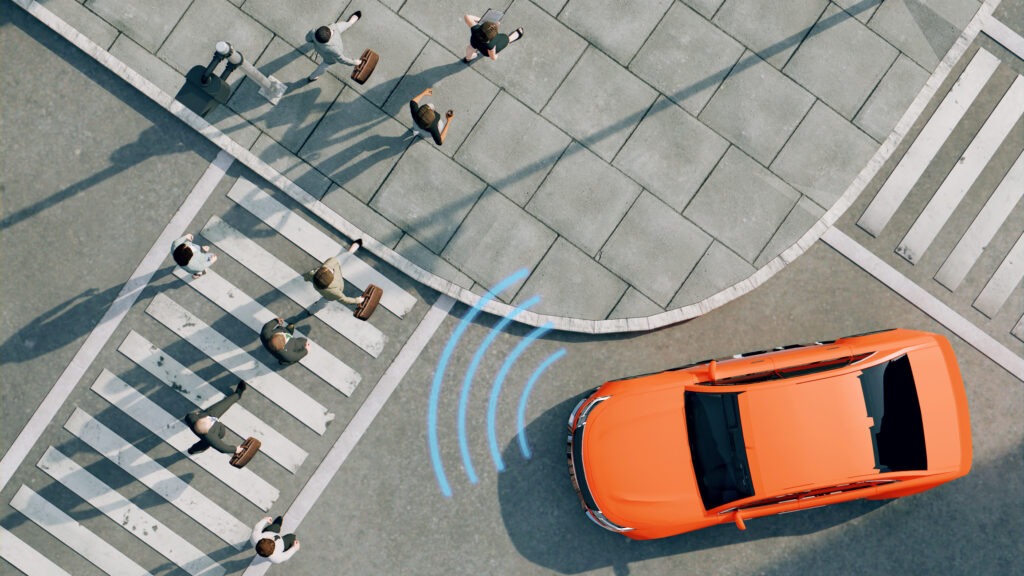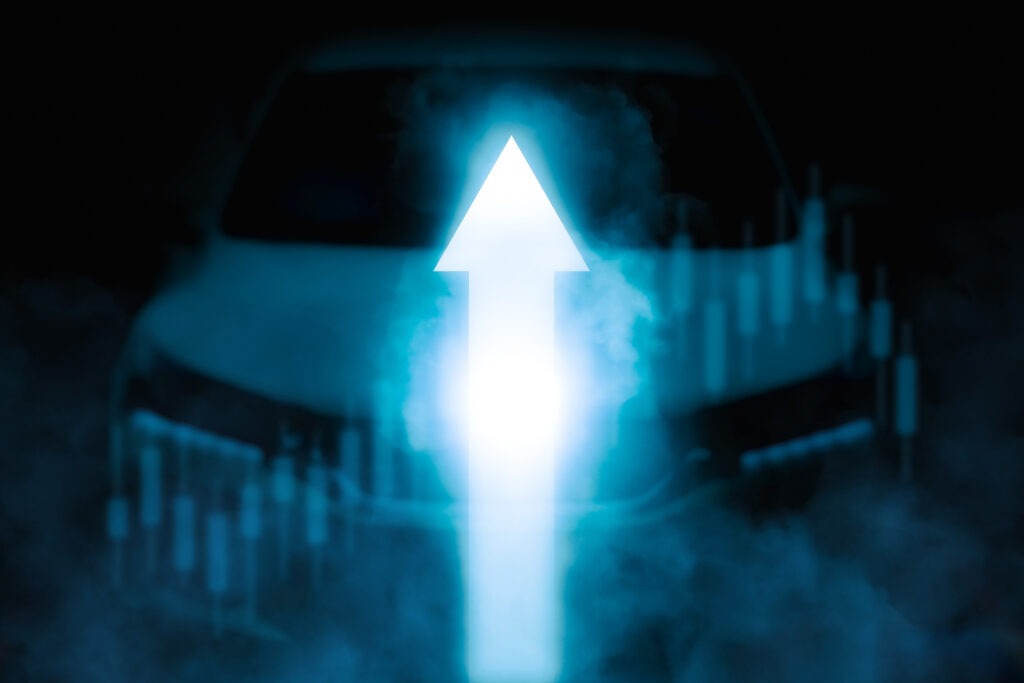Has the public perception of electric vehicles changed?
04 April 2024

As the electric vehicle (EV) market develops, consumers are gaining access to new models, makes and technologies. However, roadblocks capable of damaging the public perception of plug-in models remain. Tom Hooker, Autovista24 journalist, investigates.
Slower electric vehicle uptake will affect carmakers’ ability to hit emissions targets. Continued sales of internal-combustion engine (ICE) models will bolster EV development funds, meaning more advanced electric models in the future.
However, the current public perception of plug-in vehicles still needs to be considered. Hosting the latest electric models and technologies, events like Everything Electric can help encourage consumers to consider the transition.
Attitudes are already changing, as revealed by the National Travel Attitudes Study conducted by the UK Department for Transport. Nearly half (49%) of respondents said they planned to buy an ultra-low emission vehicle as their next car.
Yet, for the remaining consumers tentative about the technology, common roadblocks still stand in the way. Meanwhile, current EV owners continue to face many stubborn problems which could lead them to turn back towards ICE powertrains.
Electric vehicle cost concerns
One of the largest concerns surrounding EVs continues to be cost. Research conducted by the Green Finance Institute (GFI) in 2023 found that 27% of UK drivers who said they would not buy an EV, named cost as a major factor.
After some brands began lowering prices last year, more carmakers followed suit to remain competitive. This is particularly noticeable among Chinese manufacturers, beset by a more competitive market.
‘Upfront cost is still seen as a barrier, although that is coming down all the time,’ David Allison, head of product and planning at MG Motor UK told Autovista24. ‘So, from an affordability point of view, I still think there is that barrier for people to overcome, that actually, the cars are a lot more affordable than you might think.’
Salary Sacrifice
For buyers concerned about the upfront cost of buying an EV, salary sacrifice is an option. This means a reduction in salary, taken as a non-cash benefit. Without paying tax or national insurance on the portion of salary taken, this can be a more affordable way to gain access to an EV.
Some salary sacrifice schemes, such as Octopus electric vehicles, claim customers can save up to 40% on the cost of an electric car.
‘We have seen our current fleet across our 40,000 vehicles that we run at Tusker, 77% of those are battery-electric vehicles (BEVs),’ Ali Argall, business development director for Tusker told Autovista24. ‘Across the deliveries month in and month out, that moves up to 88%. So there are massive engagement levels to that new technology.’
Charging changes
Additional costs such as charger installation also weigh on consumers’ minds. In the GFI study, 21% of respondents indicated that the ability to finance a home EV charger would encourage them to make the switch.
A Which? survey revealed that only 17% of questioned EV owners thought that charging point pricing was reasonable. Respondents also had trouble comparing costs between different charging operators, with 63% facing this issue.
The GFI’s research found that 43% of surveyed drivers thought further understanding of public charging costs would incentivise the EV switch.
One way to lower charging costs would be to reduce the rate of VAT on public charging points to match home charging levels. This could benefit most owners, as a Zap-Map study showed that 90% of EV drivers use public charging infrastructure.
Infrastructure issues
Another major problem for potential buyers, usually combined with ‘range anxiety’ is the lack of charging infrastructure. GFI research revealed that 34% of UK drivers still see this as a barrier and want more infrastructure in place before making the transition.
The Which? survey found that 69% of respondents who use public chargers were unhappy with the current infrastructure. Additionally, 40% of users were not happy with availability. The majority (73%) also discovered at least one charger that was defective within the last year.
To tackle this, the UK government wants to ensure 300,000 public chargers are available by 2030. Furthermore, the number of public plug-in points rose by 47% at the end of February 2024 compared to one year ago. This equates to 57,290 charging points at 32,575 locations.
‘Infrastructure is clearly an issue. But again, is getting better all the time. Of course, the more electric cars you put on the road, the more challenging that becomes,’ Allison added.
Electric vehicle myth management
Some issues surrounding EV cost and charging could be solved by making essential information understandable and accessible. Misinformation from those looking to slow down the transition is also a major influencing factor. Many key players think addressing this may be the key to speeding up adoption.
‘I genuinely believe that there needs to be some kind of government-led campaign to dispel this [misinformation] that is ultimately there to scare people. I think if we can get over those, that will make a huge difference,’ Allison explained.
Others are campaigning to make a difference. FairCharge aims to raise awareness of charging costs, infrastructure, air quality and EV availability. Published recently, ‘The Little Book of EV Myths’ seeks to explain various common misconceptions surrounding the technology.
‘This is a big technological shift away from internal-combustion engines. So understandably, they are worried,’ Quentin Willson, founder of FairCharge told Autovista24.
‘But you have also got these vested interests pushing against this energy transition. They are putting out myths and misinformation. The normal anxieties that people have about electric cars have now been amplified by vested interests who do not want this to happen,’ he added.
Battery health
The GFI’s study identified poor battery health as the largest barrier to drivers making the transition, ranking above cost or infrastructure. Of those questioned, 62% of respondents named this as the leading reason for not buying an EV.
According to the dealerships involved in the research, battery lifespan was consistently discovered as the top concern among used EV buyers. This is despite most EV manufacturers offering warranties of at least seven years or 100,000 miles.
Battery packs in EVs are the most expensive component of the car, ranging from 30% to 40% of their total value. This makes battery value core to the resale price of an EV.
Electric vehicle treatment
‘What makes this complex is the condition of that battery will be completely dictated by the way it has been treated in the past and that treatment is totally invisible to the second-hand buyer of that car,’ Patrick Cresswell, co-founder and managing director at ClearWatt explained to Autovista24.
‘It is entirely possible for a buyer of a second-hand vehicle to be looking at two identical cars, and one of them might perform 20% less efficiently than the other.
‘That 20% could be, if it is a modern EV, 30 or 40 more miles potentially. That 30 or 40 miles could be the difference between that car fitting into your lifestyle or not. So, battery health reports are going to be essential in this transformation and one of the ways of solving that confidence gap,’ Cresswell added.
There are two solutions to help instil confidence. The first is battery health certificates as a certification scheme for used vehicles. The second is an extended battery value guarantee, stating the end-of-life value of the EV battery.
Used EVs
In the GFI’s research, 61% of non-EV owners revealed that they would currently buy an EV. Of these respondents, 73% said they would purchase a used model.
‘Supporting [used EV sales] needs to be a whole package of confidence and information that comes with that, because there are nerves that exist both on residual values (RVs) today and RVs into the future,’ Cresswell commented.
A major concern for used EVs is a comparatively steep decline in value. Autovista24’s Monthly Market Update for March revealed that on average across all powertrains, three-year-old models at 60,000 miles retained 52.5% of their original value in the UK.
For BEVs, this value sat at 37.8%, while plug-in hybrids fared slightly better at 49.8%. However, some of the fastest-selling used models in the region were EVs. For example, the Tesla Model 3 sold after an average of 21.5 days. Additionally, the sales volume index for BEVs rose 1.1% month on month and 64.2% year on year, indicating increased demand.



